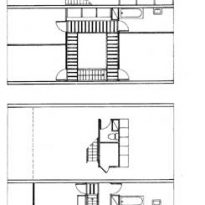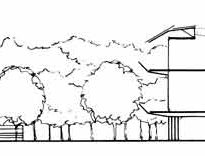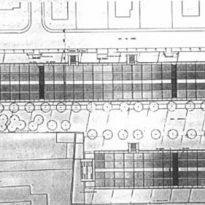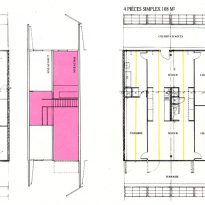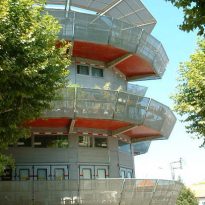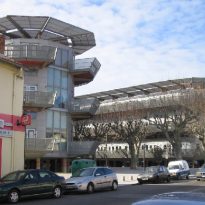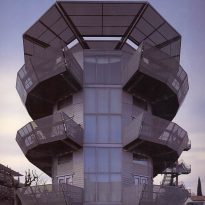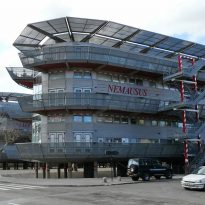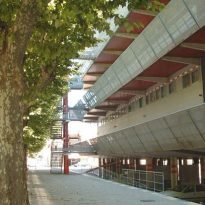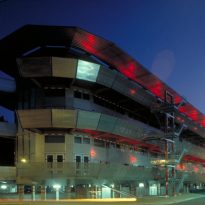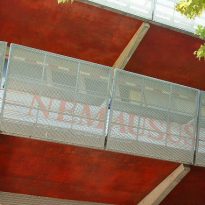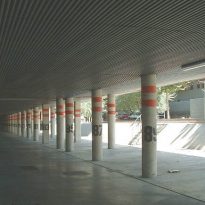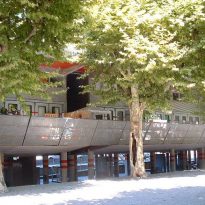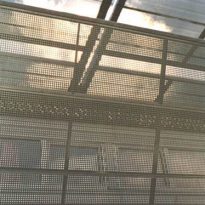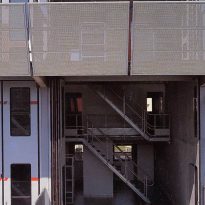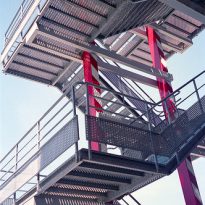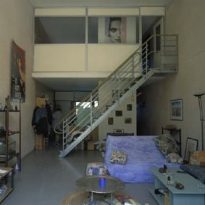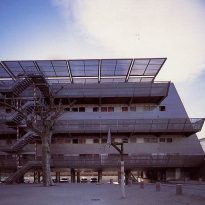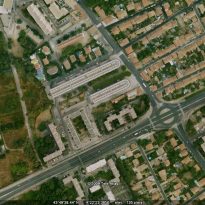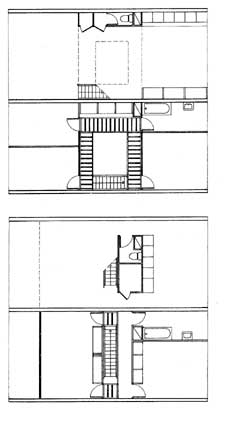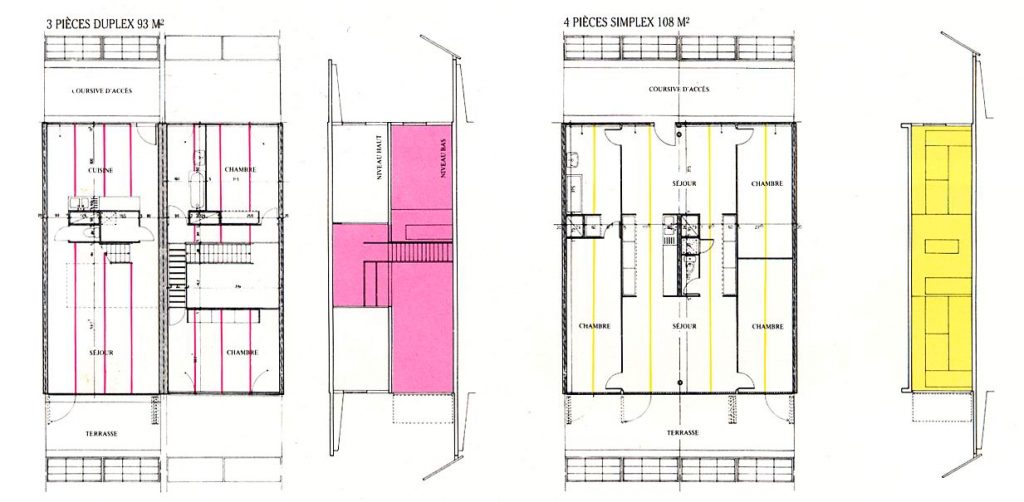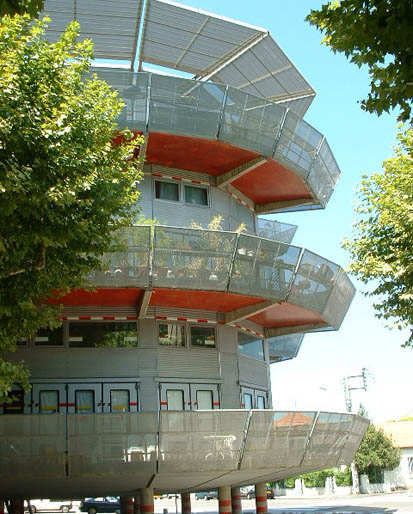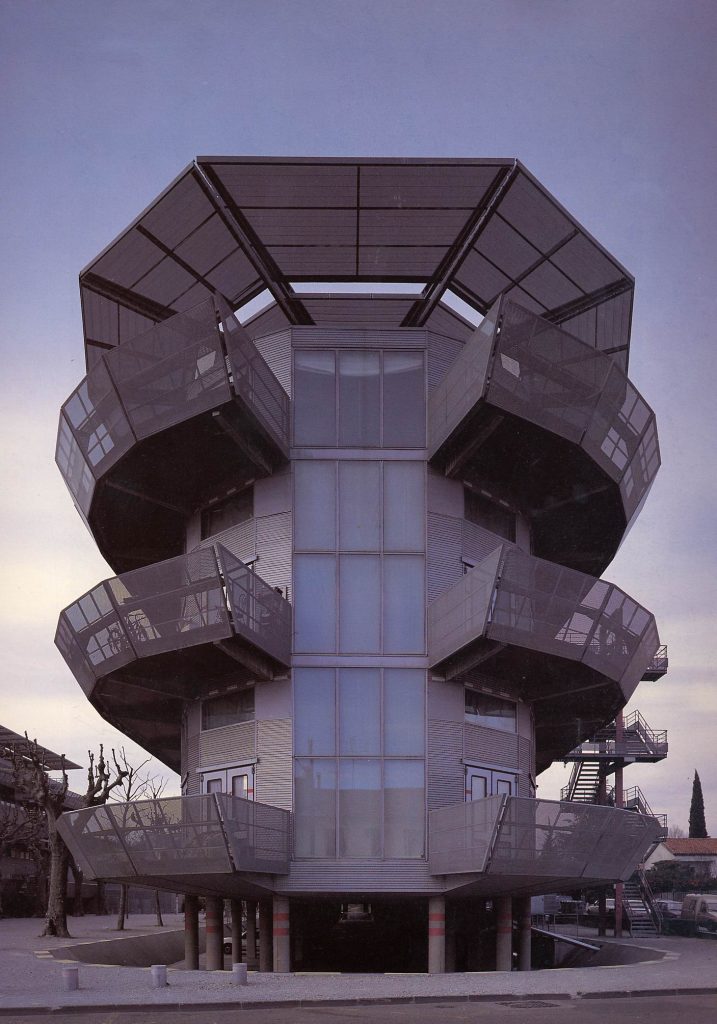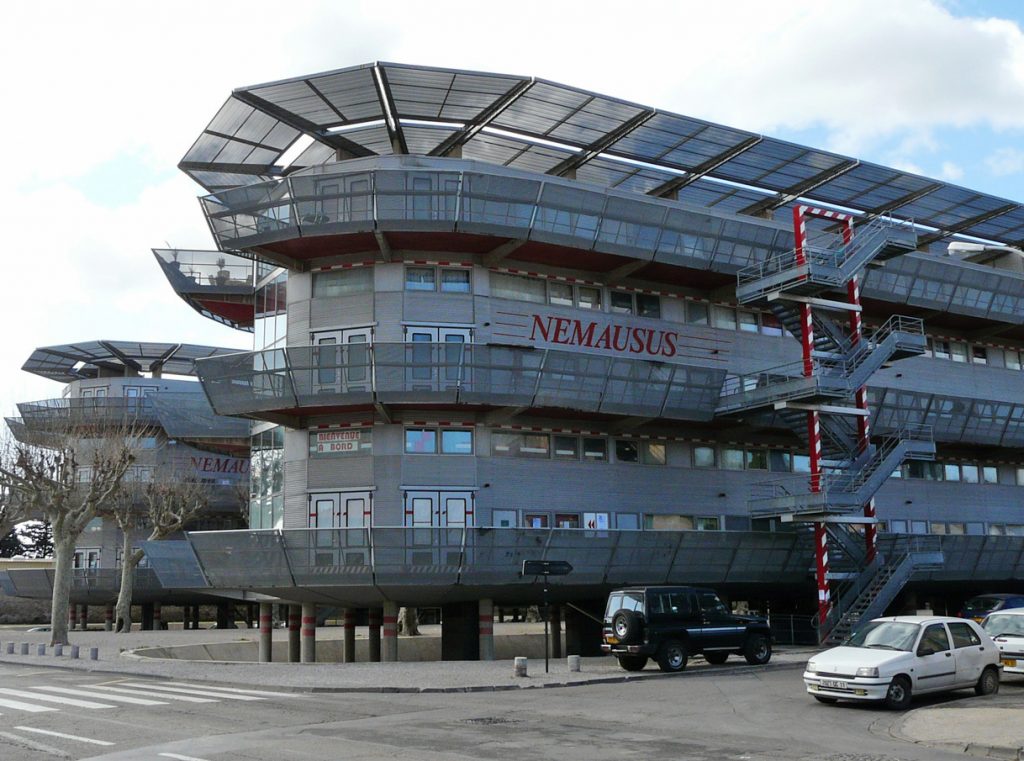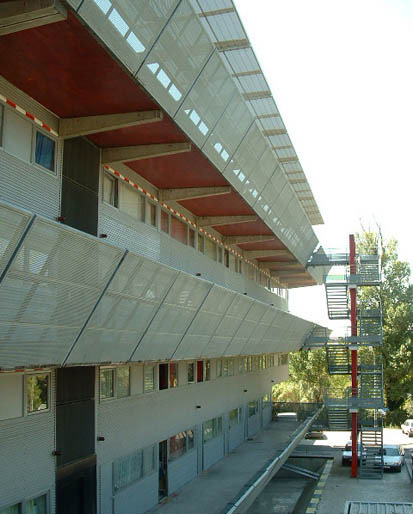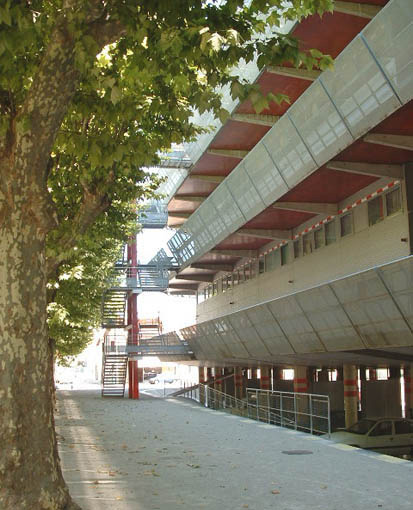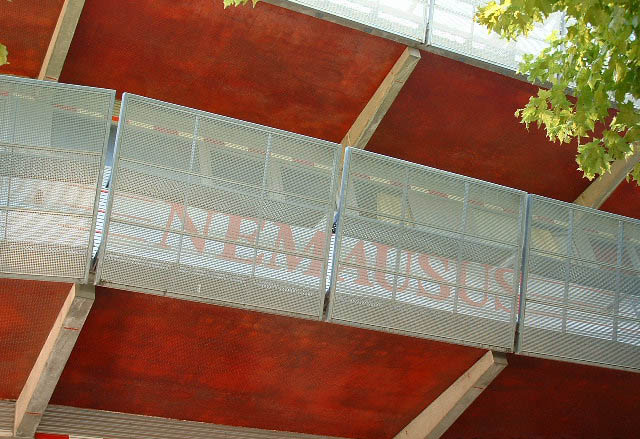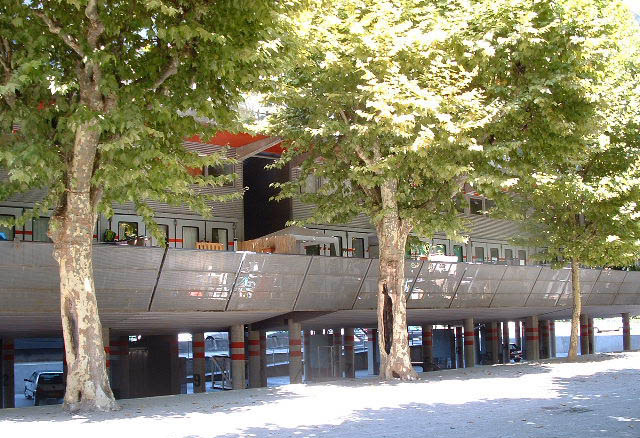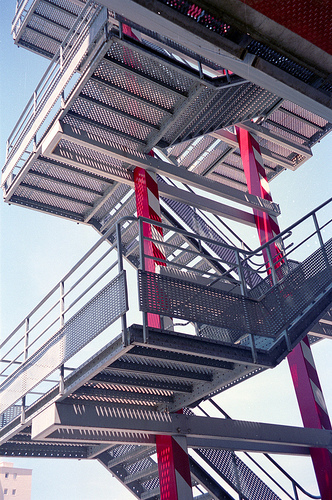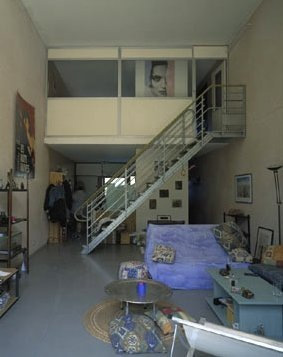Nemausus Housing

Introduction
The resolution of social housing has always been a tricky issue and a suspense account for the great architects who are used to solve large spaces and work with high budgets.
Since the beginning of the twentieth century with the expansion of cities due to the strong increase in the number of plants (from the Industrial Revolution), the need for more homes to be noted.
The deficit increased with the exodus of population from rural to urban areas led to the urgent need for mass housing and low cost. The cities were not prepared for such growth, and lacked the necessary infrastructure for this new situation. The lack of safe water and hygiene and sanitation led to epidemics that resulted in tragedy. This reality is echoed in the designs of the era, and soon to appear for settlement proposals.
Working-class districts, with the repetition of the minimum housing standard were the first response. Almost at the same time, examples emerged in Russia’s affairs and are committed to using new materials.
But the first World War, coupled with the economic crisis in the United States which had caused a large scale again this urgent need. The destruction of entire cities and the sharp increase in construction costs require new solutions.
The first attempts in the Netherlands were the prelude to the contribution of Le Corbusier in his buildings as city halls self.
Since the 70s, the search for new theoretical and practical responses decreased worldwide, supported by the rise of capitalism, investing in commercial buildings to provide revenue.
From there, bringing the architecture to social housing has been more mild and isolated models. Without strong intervention by the state and less commitment on the part of architects, examples have been increasingly heterogeneous and without clear guidelines.
Location
Nimes is a French city located in the south near the Mediterranean Sea. The remains of Roman times made this city famous, and has numerous buildings, amphitheatres, aqueducts, and perfectly preserved.
The area has a very good climate in much of the year and its people have the habit of living far away from home, making use of public space.
France is considered a “first world”, which means that its rate of poverty and deprivation is far below any other developing country or sub-development. Unemployment and housing shortage is a lesser evil, but something existing. In such countries, the most common is that the social housing sector point to a low-income populations or students with little budget.
Nouvel and the mayor of Nimes knew of a previous competition held for the building of the Municipality of the city. The impression that the politician was the architect was very good, especially for knowledge of it being his own country. Thus it was for the development of this set, the mayor gave him the “carte blanche” to enable it to develop.
Concept
The complex housing Nemausus the challenge was much greater than just solving a whole. The objective was to meet the needs of a society in constant transformation, and build houses at low cost.
But the real concept stems from the need to define what is a good apartment. In this quest, good apartment andalusia Nouvel defined as simply an apartment as large as possible. A good apartment is flexible, able to convert. A good cheap apartment in a democratic sense.
Mimicking the way some of the buildings raised by the modern movement, Nouvel proposed that the same off the field. To rationalize the use of land, located in the garage floor, half-buried, following a municipal ordinance but also to the parking lot does not limit the visual and from the outside of the package. Also recomposes and reinterprets the idea of dragging the flag that grows in height, with common spaces.
Nouvel poses two buildings almost parallel elongate boat-shaped, one shorter than the other. Between one half of them projected park and public space that gives ownership to the residents. They kept two strips of trees that once formed an arboretum, and run along the entire package.
In Nemausus, the architect tries to enhance the area, providing as much light, take the flow of air, and issues for the time seemed discredited, or neglected. Nouvel planned houses from the inside out, to prolong the interior and providing more living space.
Currently, people living in these buildings was very young. In fact, 80% have less than 35 years, and the largest has 51 years of age. Of these people, 20% are unemployed, 3% are workers, 20% are employees, 31% of middle class / educated, 19% students, and 7% other categories.
Spaces
The two buildings with parking on ground floor semi-buried, and three upper floors of apartments. In total there are 114 housing units distributed in the set, with simple types of duplex and triplex (studios, one bedroom house with double height, etc). The total area is habitable 10.400m2, so the average of each dwelling is 91m2 (well beyond the traditional social housing). In addition, each of these types gives to both sides of the package.
Building access is via stairs located on the common area of the half, separated from each ship. They are complemented elevators stuck on the inside of each body, right in the middle of them. Horizontal circulations are located throughout the length of each volume, covering three floors. These movements are made to methods of “high street”, with a considerable width to travel on foot or by bicycle, to serve as common space for interaction among neighbors and expansion of housing.
At the opposite facade, which faces the street and adjacent buildings, this is repeated a footbridge but in this case is used in private practice for each unit. It is used as a sole or balcony space saved. Towards each side of these passages, the walls are opened outward, expanding the boundaries of each dwelling.
But as Nouvel warrants, the set is designed from the inside out. With the single premise to create apartments with maximum flexibility and variety of types in a modular fashion, it creates multiple possibilities and combinations. But to do so, and build more space at the same price, uses a straight logic, elementary, and as simple as possible.
Finally, all attempts to mimic the rest of the neighborhood through the materials used and the height of it.
Structure
Again, in order to lower costs, the building structure was designed in a practical and rational. The two volumes are based on a series of columns placed every five meters, which surround the parking space. This decision follows the idea of allowing visual continuity on either side.
Resting on these columns load-bearing walls that divide each apartment, which are repeated in the same way throughout the three floors. This module generates the same way throughout the building, which combined with one another, create different types.
Since the walls of the cargo flow on both sides corbels to hold the gateway corridor and space-expanding ass. For the load on each of them not too, Nouvel poses a counterweight system. Ie, it generates a transverse structure, which will hold the hand of a common movement, and the other the private courtyard of each house, making sure that both are balanced.
The only exception to the modulation of the walls are prepared every 5 meters, is in the center of the nave, where it is severely broken with two walls to find a shorter distance, and there put the elevators.
The stairs are off from each building and have an independent steel structure. His connection with the horizontal flow is through bridges. Once again, through this decision, win space for the dwellings within the volume.
Many of the typologies is also a volume of a rectangular shape in the center, which is located in a toilet, kitchen and a storage space. This space is also used to locate the vertical movement inside.
Materials
The materials on Nemausus are given by this particular image so radical. On the occasion of saving money, Nouvel conceived of his work with industrial materials and prefabricated items easy replication and assembly.
Structure for working with columns and walls with crude revoke. On the rails of the stairs use of movement and micro-perforated sheet metal as well as aluminum. For the independent structure of the stairs using rectangular steel sections, painted red and white stripes, emphasizing the language industry.
Used on the facades and corrugated galvanized “adorned with red lights like sirens. Vain for a weapon modular repetition of windows and doors similar to those of the trains, made the façade of each home. The particularity of this, beyond the image series, is that the facade of each home can be opened completely, and relate it to the outside. Also, many times these doors are double-height, so each person can break the stigma of homelessness among four walls, and open her apartment as if it were a simple curtain. Inside the houses, stairs and metal are also reported the different spaces.
Finally, each building is topped by horizontal visors on both sides, which meant much of the budget, but provide containment against the strong natural lighting in the area.



